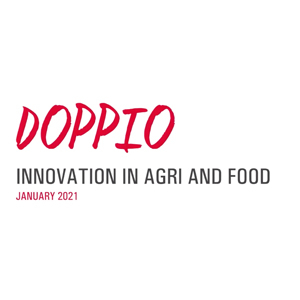Christoph Haupenthal has worked as a consultant for more than 20 years, including working for a-connect from time to time.
In his parallel life, he leads the Institute for Applied Blockchain (IABC) at the Digital Business University in Berlin. The IABC helps companies identify and realize business cases with blockchain technology. IABC is made up of businesspeople and coders to bring both worlds to the table.
What could be a business case with blockchain technology in the industry and not just a use case?
At the IABC, we’ve identified some business cases in international trade along complex supply chains:
- Cross-border payments
- Streamlining of information (e.g. certificates) along the supply chain – e.g. e-certificates of origin
- Tracking and tracing of products to provide customers and/or end consumers with additional information – e.g. for ethical sourcing
To give an example in more detail:
Companies (e.g. in the food and cosmetics industries) have to demonstrate that their supply chains are sustainable and tamper-proof. So far, this proof has not been easy to provide because:
- Supply chains usually consist of many participants who do not have the same interests and do not trust each other
- Competitive information (such as concrete raw material sources) must not be published in an uncontrolled manner
- Supply chains for natural raw materials often begin in regions where the level of organization is just as low as the technological equipment of the supplying parties
After all, fake sustainability can help make a lot of money, so there is an incentive to falsify information. Against this background, there is a need for effective, non-manipulatable track and trace systems to demonstrate the sustainability of a variety of supply chains with reasonable effort.
We’ve developed such a track and trace system, which is based in the cloud and blockchain, is suitable for a variety of manufacturing industries, and is provided as SaaS (Software as a Service).
The service is characterized by several innovative and unique features:
- Versatility: it is suitable for a variety of products, rather than being limited to one product group (such as coffee, fish or wine)
- Enterprise-ready: it is provided as SaaS, so offers simple implementation, no hosting effort, no problems with updates, etc.
- Low cost: it uses Ethereum, an open blockchain (a ‘public ledger’), and therefore has lower license costs than with a ‘private ledger’
- Openness: it integrates easily and extensively into ERP and CRM systems by using APIs
The customers of this service can demonstrate credibly and transparently that their products actually have the advertised properties (place of origin, harvest conditions, transport conditions, etc.). This enables them to upgrade their products, consolidate their position with their customers, enforce higher sales prices and positively influence their image among end consumers and NGOs. The customers of this service can make the information on the supply chain that is stored in the blockchain available to different audiences in a very targeted way.
Why do we differentiate so strongly between use case and business cases?
Today, ‘use cases’ are omnipresent and part of any discussion in the wider context of digitization and, in particular, blockchain. In these discussions, a ‘use case’ is often understood as a preliminary stage to a comprehensive change of the present. “Works technically” leads to “is about to be implemented”, “proves that there is a great future for the technology”, and so on.
Carrying a backpack of plentiful disappointments, our simple answer is: total nonsense. Just because a plain steel screw can be gold-plated, not all steel screws are gold-plated. Not in general and not for corrosion protection in particular (apart from one or two niches). Why? Because other corrosion protection overwhelmingly does fine at a fraction of the cost.
So, what an entrepreneur is looking for is a BUSINESS CASE. A solution to a problem that works well AND has the potential to earn money. Since businesspeople only spend money if there is value in the solution, this is the way forward to a more sophisticated world.
The first paragraph of any whitepaper should start with the business problem, including the current solutions in place – which in most cases is already common practice. Next it should lay out ways to improve the status quo. This can start with a blockchain solution but must not stop there. Only by comparing different ways to achieve the goal can you get an idea of the merits of the solutions. Without a deep dive into the problem, no one can judge whether blockchain is THE solution.
By the way, the development of Bitcoin was based on just such an understanding of a problem. “Creating an electronic currency with no middlemen required” lead to a sophisticated peer-to-peer network, a cryptographic proof and a scarcity and reward system, bearing ALL the requirements for a stable currency. If the requirements had been different, we would use a different bitcoin solution today.
Diving deep into problems will help to initiate what we regard as the biggest obstacle on the way to broader blockchain application: a dialogue between businesspeople (having a problem) and blockchain folks (having one solution). Such a dialogue would result in a significant reduction of new blockchain projects and a significant increase in the success rates of the ones started, a mind shift from earning quick money to earning serious money, and a much better use of highly sought after blockchain resources
However, as mentioned above, the biggest obstacle is a constructive dialogue between business and blockchain folks. On the one hand, you find experts on specific business problems – e.g. a meticulous documentation of parts and replacements of a chemical plant over its 50+-year life cycle. On the other hand, there are coders who know how to build a distributed ledger, which might be a solution for the agonizing data sharing between engineers/builders/owners/operators/maintainers of such a plant. But today, there is no way these two groups come together. And even if they do, they speak completely different languages. What is needed to make blockchain a broader success in business contexts is the training of interpreters who know both worlds.
Naturally, this is less and less true for financial institutions, since the incarnation of blockchain, Bitcoin, was built to mimic a currency. Another vague sign of hope to realize blockchain solutions already occurs around supply chain and logistics (see examples above). And it’s highly unlikely that comprehensive distributed ledger systems are going to replace today’s IT landscapes. At least not within the foreseeable future. It is way too expensive.
Therefore, business experts: try to at least basically understand the blockchain concept; blockchain coders: get in contact with business experts.
Being visionary feels good, being entrepreneurial does good.
Christoph is natural scientist with excellent analytical skills and strong communication skills. He has worked as a consultant for more than 20 years. He loves to identify new ideas and turn them into innovative enterprises. He has already founded five enterprises.





